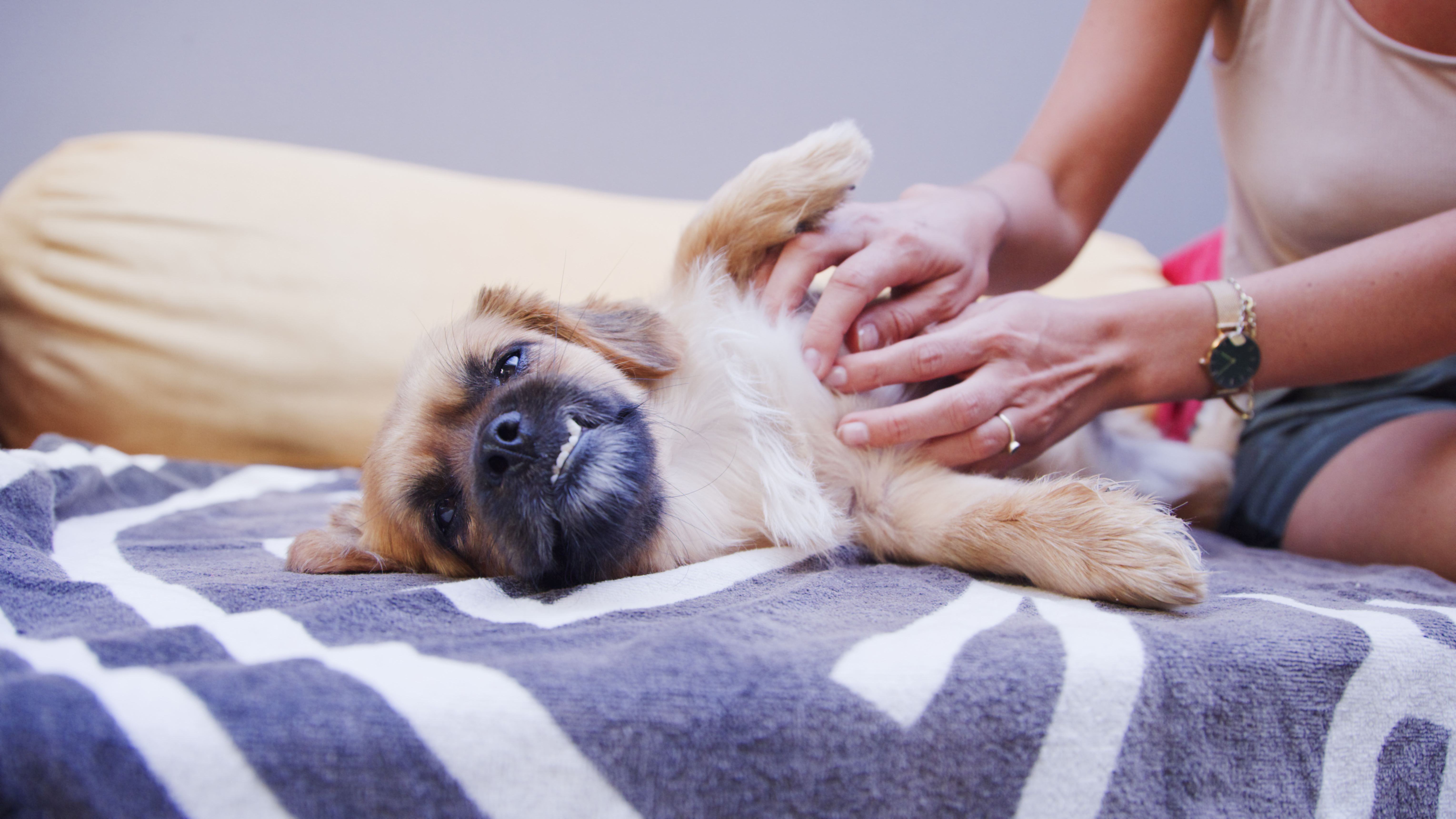Do dogs carry bed bugs? A vet weighs in
Do dogs carry bed bugs? A vet answers the question on every pet parent’s mind

Do dogs carry bed bugs? The recent bed bug infestation in France has brought these little insects back into people’s minds, so if you’ve found yourself pondering this question, you’re not alone!
It’s important to remember that bed bugs are different from insects like fleas, and it’s rare that your pup will introduce bed bugs into your home in the first place – these little critters prefer hosts with less hair, so humans are more likely to introduce bed bugs than their dogs. Fleas are a different matter – if your dog has fleas, you might need to try the best flea treatment for dogs.
But, of course, that doesn’t mean that your pup won’t be affected by bed bugs, and it doesn’t make them any less annoying and frustrating to deal with – even if it’s rare for them to cause any serious health issues.
We spoke to vet Dr. Anna Foreman to get her take on all things bed-bug related. From whether dogs carry them to how to get rid of them if you currently have an infestation at home. Let's take a look at what she had to say...

Anna works as a small animal vet in Hertfordshire, having graduated from the Royal Veterinary College. She loves surgery, and especially enjoys performing more complicated soft tissue and orthopedic procedures while studying towards her advanced surgical qualifications. Anna also works as a vet for Everypaw pet insurance, helping with claims queries and commenting on veterinary topics for many publications. Anna has several pets, including a bearded dragon and a tank of tropical aquatic life.
What are bed bugs?
Bed bugs are small insects, usually around 5mm in length when fully grown. They often live on bedding or household furniture – hence their name – and are often brown, red, or dark yellow in color. Two species of bed bugs are associated with humans, and they both have six legs and two long antennae. They tend to feed on blood every eight to ten days, but they can go longer without food if they need to.
You might find them hiding on bed frames or mattresses, on furniture or clothing, or behind pictures and loose wallpaper.
Signs of bed bugs can include bites on your body – particularly on places more likely to be exposed when you’re sleeping – and spots of blood on bedding or furniture, which could be from the bites or from squashing a bed bug.
Get the best advice, tips and top tech for your beloved Pets
Their bites can be itchy and annoying for dogs and humans alike. In some cases, they can cause a reaction, leading to more itchiness and swelling too. Severe allergic reactions are possible, but these are rare.
Can dogs carry bed bugs?
Dogs can, in theory, carry bed bugs and introduce them into their home, but they’re more likely to be introduced through another source.
“Unlike fleas, bed bugs are a ‘home’ problem rather than an ‘animal’ related one,” explains Dr. Foreman. “Dogs very rarely introduce bed bugs into a home and are just another victim to the bites! Rather, bed bugs are likely to be introduced into a home via a human (bed bugs prefer ‘victims’ with a lack of hair) or infested fabric or furniture (second-hand sofas, suitcases, etc.).”
And, unlike fleas and other similar parasites, bed bugs don’t actually live on their host. They just feed on them. Instead, they hide in fabric.
“They therefore could live in material sitting on a dog, such as a collar, harness, or jumper/coat, but are far more likely to be introduced in one of the above scenarios,” says Dr. Foreman.
How can you tell if a dog has bed bugs?

The sort of things to look out for in dogs are similar to those you might look out for in humans. “A dog being bitten by bed bugs will show discomfort and distress – being pruritic (itchy) and turning around suddenly to look at spots being bitten, often then nibbling the area,” explains Dr. Foreman. “Hair loss and bite marks may also be seen depending on the degree of the infestation.”
Unlike ticks and fleas, for example, bed bugs don’t transmit disease, but your pup still might be uncomfortable and unhappy if they have bed bugs. They might lick, bite or scratch the affected areas, or just be more irritable than usual.
Check for marks or spotting around your dog’s bedding too. You might see squashed bed bugs, blood from your dog’s bites, or dark spots, which are bed bug droppings. You may also notice shed bed bug skins, or even bed bug eggs. These are all indications that bed bugs are around.
How do you get rid of bed bugs on a dog?
“If a home is found to have bed bugs, it is best to contact a pest control company,” says Dr. Foreman. “The problem will not be resolved through treating the dog as such, but rather controlling the source in the environment.
“This is like flea infestations where 95% of the population reside in the environment rather than on the dog, and so environmental control as well as topical flea treatment is vital. Unfortunately, with bed bugs, there is no topical treatment/repellent dogs can be given to stop them being bitten, and so environmental control is key.”
It can be difficult to get rid of bed bugs on your own. Because they’re so small, they can be hard to find. And, they can be resistant to some common insecticides.
If you’re concerned that your dog might have been around bed bugs, you can give them a bath. And, it’s a good idea to wash any collars, leashes, or coats they may have been wearing in hot water. Anti-tick and anti-flea treatments are unlikely to work because they’re not designed to tackle bed bugs.
Ultimately, when it comes to bed bugs and your pup, common sense goes a long way. If you’re concerned about bed bugs, make sure your dog’s clean and give them a bath if you need to – check out our guide to how to give a dog a bath for more on this. And if there are bed bugs at home, a pest control company will be able to help.
In most cases, bed bugs are more of a nuisance than a danger, but that’s not going to be of much consolation if you’re dealing with an infestation. So, for a happy household and a happy pup, it’s best to be proactive and tackle the problem in your home.

Adam is a freelance journalist specialising in pets, music and culture, and mental health and wellbeing. He investigates and writes the large majority of news on PetsRadar, and collaborates with veterinary experts to produce informative pet care content.
Adam has a journalism degree from Southampton Solent University and a masters degree in Magazine Journalism from Cardiff University. He was previously senior editor at dog advice website DogTime.com, and has also written for The Independent, GoodToKnow and Healthline.
He owns two rescue cats, Bunny and Dougie, and has also previously had a rabbit, fish and Roborovski dwarf hamsters.
